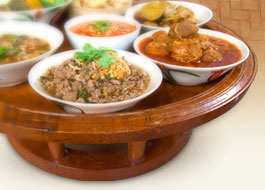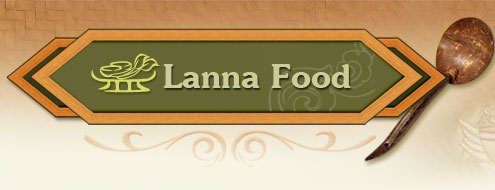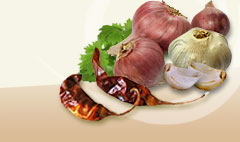|
The liquid reserved from the bottom of the basket of fermented tea leaves is boiled on a low fire until it becomes really thick. It is then kept in a bamboo cylinder or a tightly sealed clean, dry jar. The flavor is a little bitter. Nam miang can be used in some dishes, especially the khua kind. (Uthit Pengmon, personal communication, July 10, 2007; Sirawit Chamras, personal communication, April 25, 2007) |




